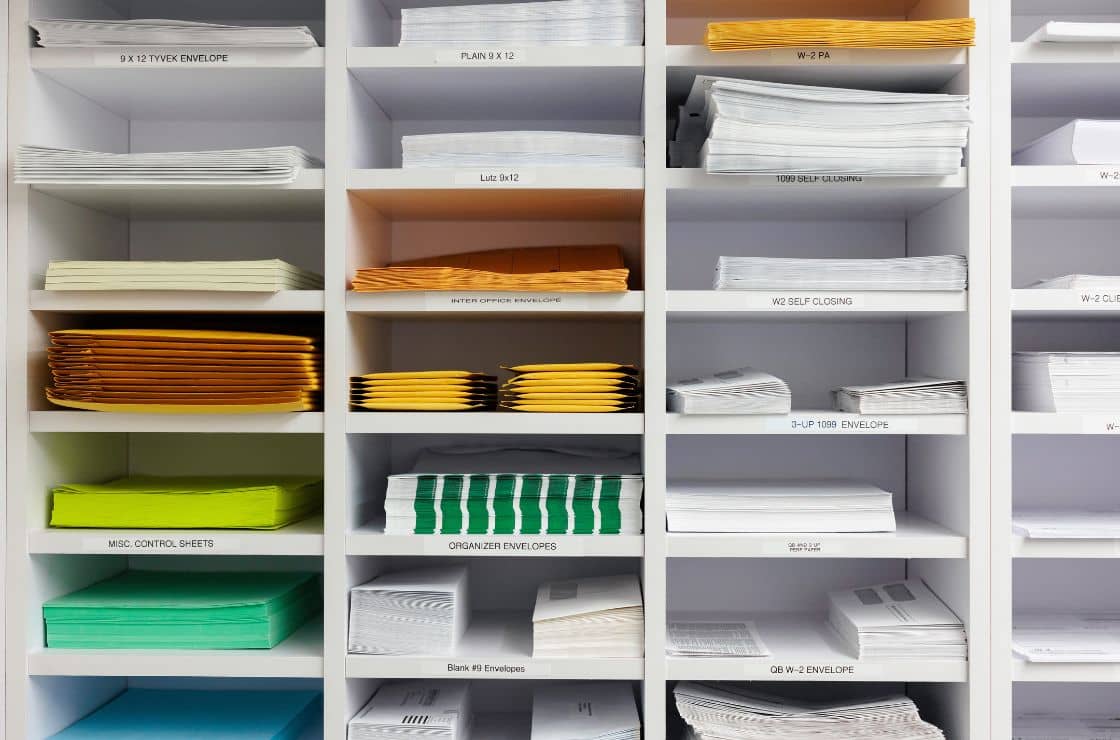4 Types of Sales Forms You Should Be Using

If you have paper and writing utensils, you have all you need to create every type of sales form required for your customers. You can, of course, generate them using a word processor, so you’ll have your own copies. Accounting applications like QuickBooks make this process dramatically easier; they also store permanent records for easy viewing and tracking.
Whatever method you choose to produce them, using the correct form for every situation will help ensure that your accounting files are accurate. Here are the ones you’ll be most likely to need, depending on the type of business you operate.
Invoice
If you don’t collect payment at the time customers receive their goods or services, you’ll need to provide them with an invoice. These forms document sales and tell the recipients what’s expected. Besides your contact information and theirs, they typically contain:
- An invoice number for reference.
- The invoice date and the date payment is expected. The due date is usually calculated based on terms you’ve established (like net 30 days or on receipt).
- A description of the products and/or services purchased.
- The price and quantity received.
- A subtotal of what’s owed for what you provided.
- Any additional charges like sales tax and any discounts earned.
- The total payment due.
You’ll also need to spell out clearly how customers can pay. Should they send you a check? Call you with a credit card number? If you’re using QuickBooks, you can dispatch invoices via email and accept payments online. This often speeds up payment.
Estimate or Quote
Does your company provide customers with an approximation of how much products and/or services will cost before a sale is even finalized? You should be formalizing this potential transaction by creating a written estimate, which is sometimes called a quote. This will help avoid any confusion between you and your prospect. Effective estimates contain the same information as invoices (minus the payment due date). QuickBooks users can automatically convert estimates to invoices when the time comes.
Sales Receipt
Do you complete “on-the-spot” sales? That is, do you ever receive payment at the same time a product or service is purchased? In those cases, you need to create sales receipts for customers. These forms can be handwritten, created using a word processor, or generated by an accounting application. Include the date, number, and information (description, quantity, and cost) of the items purchased. Don’t forget to document the payment method.
Statement
When customers’ payments are overdue or if they simply want a record of past transactions, you should offer them a statement. This form lists all invoices sent and payments received for a specified date range. Creating this manually can be quite time-consuming and may not be completely comprehensive. QuickBooks can create statements automatically.
Your sales forms can be easier to create and more accurate if you use QuickBooks. The forms will look more polished and professional. Let us know if you want to explore the possibility of implementing QuickBooks or another accounting software.

- Harmony, Futuristic, Arranger, Restorative, Woo
Amanda Harpster
Amanda Harpster, Client Advisory Services Manager, began her career in 2003. She has developed extensive expertise in accounting software and small business consulting.
Specializing in QuickBooks support and accounting software conversions, Amanda focuses on providing consulting services to clients across various industries, including manufacturing and distribution, software and technology, and professional services. She excels at solving complex problems and improving client efficiencies through software solutions. Amanda values the opportunity to help businesses streamline their accounting processes and provide ongoing support for their financial operations.
Amanda lives in Elkhorn, NE, with her husband Kyle, their two children, two dogs, and a cat. When she's not competing in bowling leagues and traveling tournaments, Amanda can be found cheering on her kids at their sporting events and show choir performances.
Recent News & Insights
Financial Planning Advice for Recent College Grads
2024’s Hot Stocks Have Cooled Fast + 4.23.25
Do You Need a Family Office? 7 Aspects to Consider
Tariff Volatility + 4.7.25



.jpg?width=300&height=175&name=Mega%20Menu%20Image%20(1).jpg)
%20(1).jpg?width=300&height=175&name=Mega%20Menu%20Image%20(2)%20(1).jpg)
%20(1)-Mar-08-2024-09-27-14-7268-PM.jpg?width=300&height=175&name=Untitled%20design%20(6)%20(1)-Mar-08-2024-09-27-14-7268-PM.jpg)

%20(1)-Mar-08-2024-09-11-30-0067-PM.jpg?width=300&height=175&name=Untitled%20design%20(3)%20(1)-Mar-08-2024-09-11-30-0067-PM.jpg)
%20(1).jpg?width=300&height=175&name=Mega%20Menu%20Image%20(3)%20(1).jpg)
%20(1).jpg?width=300&height=175&name=Mega%20Menu%20Image%20(4)%20(1).jpg)
%20(1).jpg?width=300&height=175&name=Mega%20Menu%20Image%20(5)%20(1).jpg)
-Mar-08-2024-08-50-35-9527-PM.png?width=300&height=175&name=Untitled%20design%20(1)-Mar-08-2024-08-50-35-9527-PM.png)


.jpg)




